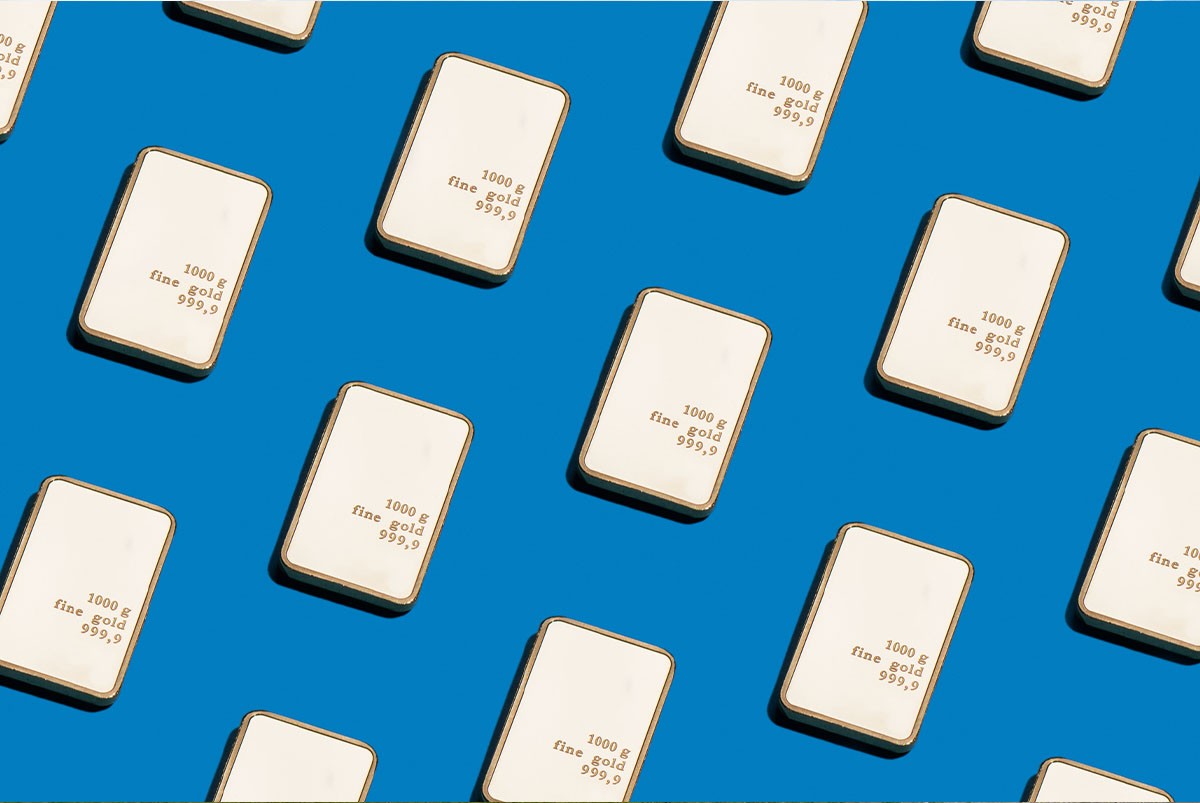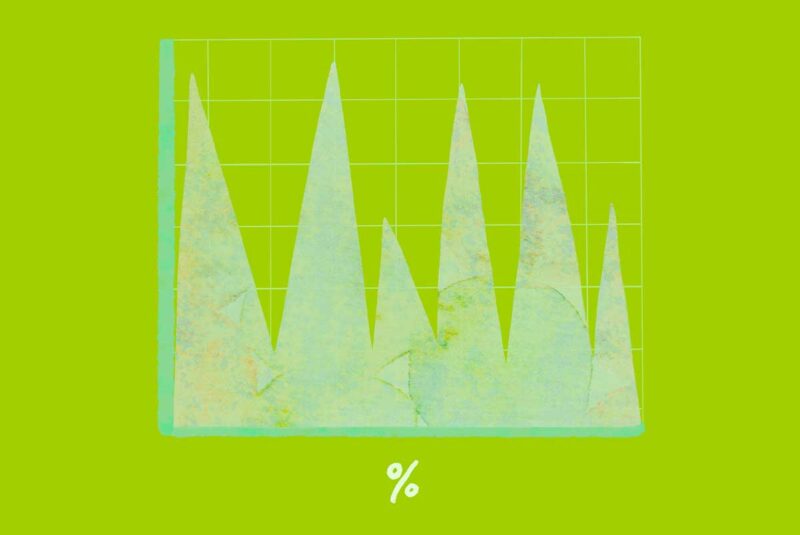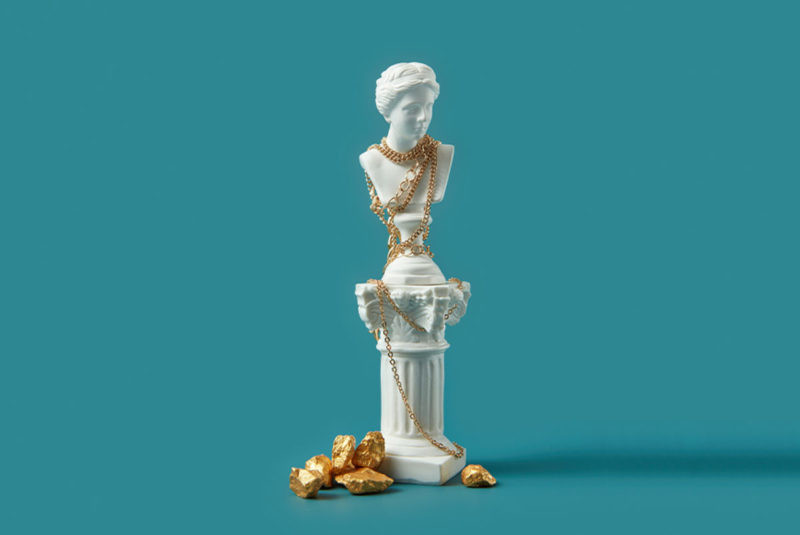Throughout history, gold and silver have been highly sought after – making their way from the private stores of royalty to investors’ portfolios. But in a growing investment universe populated by Bitcoin, NFTs (non-fungible tokens) and other exotic and conventional investment options, is investing in precious metals in 2022 a good idea?
Investing in a commodity, like precious metals, can be enticing, especially considering our current economic climate and market fluctuations.
It should come as no surprise that many of us are eager to future-proof our finances. But like Kid Cudi warned us – everything that shine ain’t always gonna be gold – and you should assess your risk tolerance before you invest in anything.
Let’s go over the basics of investing in gold and silver and help you decide if precious metals deserve a spot in your investment portfolio.
Investing in Gold
Gold is considered one of the most precious metals. While it has a few industrial uses, it’s often used in jewelry and as currency. The price of gold is largely driven by its value as an investment asset and its store of value.
Gold typically maintains its value during economic downturns and skyrocketing inflation. When inflation is high or the economy is unstable, the value of gold increases, which protects you as the purchasing power of the U.S. dollar takes a slide.
Because gold has such a stable shelf life, it’s a good asset to consider for investment portfolio diversification. Gold can help balance out losses from other asset classes in your portfolio, making it a solid inflation hedge.
Investing in Silver
Because silver has more industrial and technological uses than gold, the price of silver is driven by its speculative value and industrial demand. It makes the price of silver more volatile than gold, especially in the short term, which makes it a riskier investment.
Silver’s value is generally stable during rising inflation and economic downturns, but it’s not as resilient as gold. When inflation is high or the economy is unstable, the industrial demand for silver decreases while investments in silver increase.
Because supply and demand influences silver more than gold, its inflationary protection isn’t as strong. But silver can offer high returns when it’s in high demand, and it is still a good portfolio diversifier.
Platinum, Palladium and Other Precious Metals
Platinum and palladium are two other precious metals you can invest in, but they’re less popular than gold and silver. Because these metals have many industrial uses, they function more like silver for investing. But because platinum is rarer than gold, it can be more valuable when the market is stable.
The prices of platinum and palladium are so highly driven by the global economy that they are often riskier and more volatile than silver. That makes them a better option for short-term investments when the market is right.
Decide Whether Precious Metals Are Right for Your Portfolio
Investing in precious metals can be a good idea. You can cash in on high returns in the short term or preserve wealth in the long term.
Precious metals typically maintain their purchasing power in the face of currency devaluation or inflation, have no credit risk and offer financial security during times of political instability. These characteristics give gold and silver the distinction of being safe haven assets.
However, the way you invest in precious metals can affect your level of risk and return.
When you invest in precious metals, whether through commodity exchange-traded funds (ETFs) or bullion (more on these later), you hope to sell the commodity in the future for a profit. Stocks and bonds work differently. When you invest in stocks or bonds, you invest in cash flow. You expect the stock or bond to produce money (aka dividends) over time.
If you want to store wealth, investing in precious metal bullion or ETFs is a viable option. But if you want to invest in an income-generating asset, investing in certain precious metal stocks (more on these later) is more appropriate.
Choosing Between Gold and Silver
Before deciding how you want to invest, you’ll need to choose between gold or silver (or both 🤷). Let’s compare them.
| The Qualifier | The Comparison |
| Portfolio diversifier | Gold and silver will diversify your portfolio. |
| Volatility | Gold may be less volatile because, unlike silver, its price doesn’t change with swings in supply and demand. |
| Inflation protection | Both hedge against inflation, but gold is a safer bet because silver is more sensitive to economic changes. |
| Return on investment and value | Historically, gold has better long-term returns than silver and is worth more per ounce.[1] |
| Price | Silver is currently cheaper than gold. |
How To Start Investing in Precious Metals
After saying “yes” to precious metals, you need to decide how you want to invest in them. You can invest in precious metals in three ways: You can own them in their physical form (literal bars or pieces of gold and silver 🤩) or receive bullion certificates. You can invest in ETFs. Or you can invest in gold mining stocks and mutual funds.
Bullion
Silver coins, gold bars and other bullion are the only precious metal investments that have a financial guarantee during times of instability. For instance, if something happens and we can’t use paper money to buy goods, you won’t be able to trade an online fund for food, but you’ll probably be able to trade a gold coin or bar.
If you have a safe place to keep them, physical precious metals essentially store your wealth and are readily available when you need to sell them for cash. But they may not be the most practical (or space-saving) investment.
Bullion is probably not the way to go if you’re looking to invest in the short term.
Certificates
These bad boys give you all the perks of owning bullion without needing to transport or store it. The certificate states that you own bullion. But, again, if you’re looking for financial security during times of instability, you might not be able to buy anything with a piece of paper that says you own precious metals.
Commodity ETFs
Known for their liquidity, commodity ETFs that hold bullion are a convenient way to buy and sell precious metal shares on the stock market without ever dealing with security or storage. You buy professionally managed shares (similar to mutual funds) that are more secure than certificates.
Mining stocks and mutual funds
If you want to invest in precious metals and generate income, invest in mining stocks and mutual funds. Mining stocks can be risky if you don’t know how stocks are priced and valued by mining companies. Instead of investing in individual stocks, invest in mutual funds with fund managers with solid track records.
Futures and options
Options contracts and future contracts allow you to buy and sell precious metal shares, but you aren’t trading when you sign the contract.
When you sign an options contract, you can buy or sell shares for a specific price at any time while the contract is in effect. Because you’re not obligated to buy or sell, you can also decide to invest when the market is right. Timing your investment can mean potentially higher gains.
When you sign a futures contract, you must buy or sell shares on a specific date unless your position closes before the contract expires. Because you’re required to buy or sell on a certain date, a futures contract is riskier than an options contract because you can’t predict the share price on the day you are obligated to sell.
Alternatives to Precious Metals
There are many ways to invest today. Investing in gold and silver can diversify your portfolio, but it may not be the best option if you want to increase your cash flow. There are other investment opportunities to help diversify your portfolio and potentially provide income, including:
- Real estate: Investing in real estate is often a long-term game that generates cash flow. You can take on an active role (like house flipping, renting, etc.) or a passive role (like a property-managed rental, buying shares in a trust, etc).
- Cryptocurrency: Cryptocurrency (aka crypto) is a digital asset that isn’t regulated by a central monetary authority. Crypto can be traded securely, but investing in it can be risky. You can either buy currency or buy shares in a crypto ETF.
- Commodities: Precious metals aren’t the only commodities you can buy or sell. Commodities are basic goods that can be turned into other goods or services (think: crude oil, grain or coal). Whether you’re investing in gold, silver or wheat, investing in any commodity will have many of the same benefits and risks.
I’m in Pursuit of Precious Metals
Investing in gold and silver can help diversify your investment portfolio, protect your money against inflation and provide financial security during difficult times. But what it can’t do is generate income unless you invest in precious metal mining shares, an ETF or a mutual fund.
Gold may be a better investment than silver because it’s less volatile and is worth more per ounce.[1] But silver may offer higher short-term returns.
Use the volatility of precious metals to your advantage. Buy and sell when the market is right. You may earn a larger reward than buying and holding on to your investment for the long term. Talk to a financial advisor or a specialist in investing strategies for precious metals to get started.
The Short Version
- Investing in precious metals can be a good idea. You can cash in on high returns in the short term or preserve wealth in the long term
- Investing in gold and silver can diversify your portfolio, but it may not be the best option if you want to increase your cash flow
- Gold may be a better investment than silver because it’s less volatile and worth more per ounce. But silver may offer higher short-term returns
Gold Price®. “Gold and Silver Price Trackers.” Retrieved August 2022 from https://goldprice.org/




